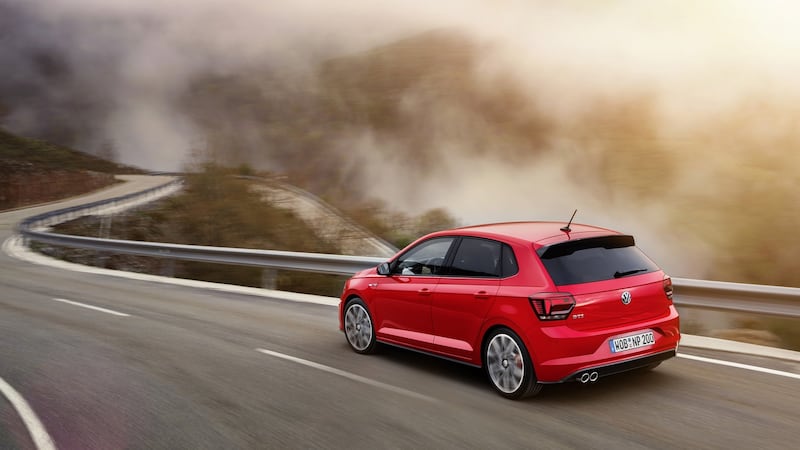The Volkswagen Polo has just moved on to its sixth generation, growing in every dimension to become not only bigger inside and out in every dimension than the outgoing fifth generation Polo, but surpassing the 1997 Golf in most critical dimensions, too. Like the rest of western society, it seems like car buyers are telling car firms “supersize me”.
By moving the Polo on to the smallest version of the Golf’s award-winning MQB architecture, Volkswagen has introduced its front-wheel drive small car into the world of the Golf and Passat parts modules, so it also scores a digital instrument cluster as an option. The accountants will also be pleased at the cost-savings and efficiencies. On the downside, it has killed off the three-door variant.
The Polo remains Volkswagen's second-biggest selling car in Europe, though it slipped behind the Tiguan to rank third globally.


Such has been the strength of the outgoing Polo, though, that it was still the biggest-selling small car in the world and the 15th biggest-selling vehicle overall in the first quarter of the year, attracting 148,331 people a full eight years after its introduction in 2009.
Young and fresh
"The Polo is a young, fresh car," Volkswagen's chief executive, Dr Herbert Diess, said. "It combines charisma with strong technology.
“No other car offers so much space for its size. This makes our Polo the number one compact, and it will remain number one.”
The new generation’s European competition will mainly come from the Ford Fiesta and Renault’s Clio, though the Clio isn’t a global player. While the Fiesta ranked 23rd in the first quarter of the year to be the second-biggest selling small car, the third spot globally went to Honda’s Jazz. None of them, though, has sold anything like the Polo’s 14 million unit figure.
The move to the all-conquering MQB architecture has meant the new car is stretched almost everywhere, crashing through the four-metre barrier for the first time in its storied history.
It will offer significantly more rear legroom with a stretch of almost 10cm between the front and rear wheels. It gains another 15mm of front headroom and 21mm more in the rear. Critically, its luggage space has ballooned by 25 per cent from 280 litres to 351 litres, which surpasses even the 330-litre capacity of the Golf Mk 4.
"The new Polo brings the future to the compact class," Volkswagen's board member for development, Frank Welsch, said.
“A whole lot of space, based on the modular transverse matrix, sustainable engines like a new natural gas TGI, the world premiere of a new generation of the Active Info Display, the latest infotainment systems and forward-thinking assistance systems - these qualities enable this Volkswagen to overcome traditional class boundaries.”
It will begin life in Europe with a selection of petrol engines, two diesels and a gas-powered model, though there are plans for both hybrid and full battery-electric versions in the future.
Engines
The base engines, at least in its fortress of Europe, will be three-cylinder, 1.0-litre petrol units with multipoint fuel injection and either 48bhp or 74bhp of power, both combined with five-speed manual gearboxes.
Two direct injection versions of the 1.0-litre three-cylinder petrol motor will chime in next, with either 94bhp or 114bhp of power. While they both share a seven-speed dual-clutch as an option, the 94bhp version has a five-speed manual gearbox while the 114bhp Polo gets a six-speeder.
The two petrol four-cylinder engines are both expensive to build, starting with the 1.5-litre from the Golf, with 114bhp of power and moving to the flagship Polo GTi’s 2.0-litre engine. The four-cylinder motors also have either six-speed manual or seven-speed dual-clutch transmissions.
There will be two diesels, too, both variants on the 1.6-litre four-cylinder layout. The entry-level diesel has 80bhp of power and a five-speed manual gearbox, while the 94bhp version is also offered with a seven-speed dual-clutch transmission.
On e star attraction will be the assistance systems derived directly from larger, more expensive Volkswagens. The active cruise control is similar to the system in the latest Golfs and Passasts, complete with the ability to bring the car to a full stop in traffic and then pull away when the traffic starts to move again.
It can be used at up to 210km/h, which is a bit of over-engineering given fully two-thirds of the new Polo range couldn’t hit that speed without the aid of a two-rope attached to a Bugatti.
Technology
While many of the advanced systems will be optional on upper-level cars, even the base versions of the Polo will have City Emergency Braking and Pedestrian Monitoring to alert the driver of people or stationary traffic and then brake. There are also optional systems, like blind-spot detection for changing lanes, a rear-traffic alert for reversing out of car parks and a semi-automated parking system.
The adoption of the optional digital screen pushes the technology further into the mainstream car market, while the infotainment screens range from 6.5 to eight inches. Volkswagen has joined the two digital screens together to form one extended panel that stretches across two-thirds of the dash.
The move has forced the central face vents down to become central navel vents, though the outboard vents remain at face height, while the air conditioner’s controls move down as well.
The car not only connects with Car-Net via MirrorLink, Android Auto and Apple’s CarPlay, but they are joined by Volkswagen’s internal We by Volkswagen digital user platform.
It will launch with three standard trim lines, including Trendline, Comfortline and Highline, plus a Beats edition with a higher-end sound system.

















